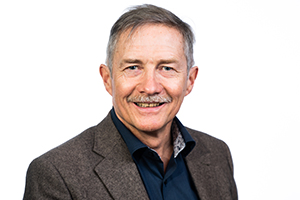Lund University
Optimizing New Generation Sustainable Photoactive Materials via AI-Enhanced Functional Imaging
WISE-WASP
Pilot
PhD
Open
Research question
New cost-effective solution-based material synthesis methods form an important direction unlocking the full potential of numerous sustainable future technologies. These methods are not just about affordability; they are the catalysts for democratizing access to cutting-edge technologies that can drive sustainability across industries. By making synthesis of advanced materials simple and economically viable, we pave the way for a world where the key green technologies become accessible to all, accelerating the transition to a more sustainable and equitable future. Examples of such materials are colloidal semiconductor quantum dots (QD), and the new perovskite materials for photovoltaic and light emitting applications. QDs have already found their way to display technologies and the perovskite materials are being developed for novel solar cell, photon detector and light emitting diode applications. A challenge with such facile solution-based synthesis methods is that defects are unavoidably formed in the material. Thorough understanding of the defect formation and how do they influence the performance of the materials is the key to optimization and future success of such technologies. In this work, we combine functional imaging of materials with AI-enhanced data analyses to obtain deep understanding of defect-related trap states and their dynamics in solution-based photo-active materials, like hybrid halide perovskites. The knowledge will be used for rational design and optimization of new generation of sustainable materials.
We use a newly developed intensity modulation two-photon excited photoluminescence (PL) and photocurrent (PC) microscopy (IM2PM). Since the two-photon excitation has a micrometer resolution and the measured PL and PC are directly related to the functioning of the material in light emitting and solar cell devices, we call the technique functional imaging. The excitation modulation leads to oscillating PL and PC signals which are analyzed in terms of Fourier components containing information about photo-induced charge carrier trapping and dynamics. Provided the materials and the measured signals, physical models are formulated to describe such dynamics. The models link the IM2PM experiment with detailed material properties. Because of the complexity of the models, the usual direct data fitting algorithms are of limited applicability here. Machine learning (ML) methods have recently gained prominence playing a pivotal role in bridging the gap between complex experimental data and a deeper understanding of the dynamic processes in the studied materials.
Sustainability aspects
An important sustainability aspect is the discovery of materials which are easy to make and contain only environmentally friendly components and processes. In this way technologies based on those materials become easily available for all interested parties making world a more sustainable place. The project is closely linked to Sustainable Development Goal (SDG) 7, affordable and clean energy).
Lund University
Andreas Jakobsson
Professor
andreas.jakobsson@matstat.lu.se

Lund University
Tönu Pullerits
Professor
tonu.pullerits@chemphys.lu.se
Explore projects under the WISE program
WISE drives the development of future materials science at the international forefront. The research should lead to the development of sustainable and efficient materials to solve some of today's major challenges, primary sustainability. On this page you can read more about our research projects.
Explore projects